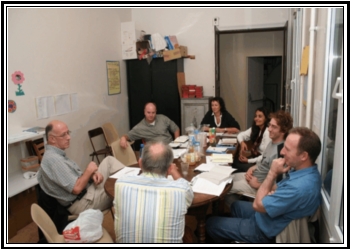The shaping of communities is the practice by which we agree to be reliable personally and organizationally. This practice takes on life through roles and rituals, laws and agreements – indeed, through the whole assortment of shared commitments and institutional arrangements that order common life. In one sense, then, shaping communities is not just a single practice of its own. It is the practice that provides the choreography for all the other practices of a community or society. In order for our church community to flourish, it must be ordered, cared for, and led. The practice of governance is the soil in which all the practices of a community are rooted and nourished. A healthy church community creates a space for people’s gifts and talents and its shape is dependent on its members – not all church communities look alike, nor do they all have to be clones of each other. But the heart of a Christian community lies in the fact that it proposes an alternative form of community. The “Kingdom of God” is the code-word for this alternative community which Jesus tried to create among his disciples. The New Testament can be seen as a “how-to” manual for creating such a community. Jesus constituted his community around power turned upside down. What message does Jesus’ style of egalitarian discipleship suggest about models for leadership? This “new world order” of the early church was seriously compromised when Christianity gained its status as the universal imperial faith under Constantine. The perennial Christian strategy since Jesus’ day has been to gather the folks, break the bread, and tell the stories. We can adapt and create governance and leadership practices, then, by answering basic questions: What shape ought the gathering take? Who breaks the bread? Who tells the stories? Whom do our practices welcome to the table? How do we show in our life together that social distinctions based on race, class, and gender don’t count here?
